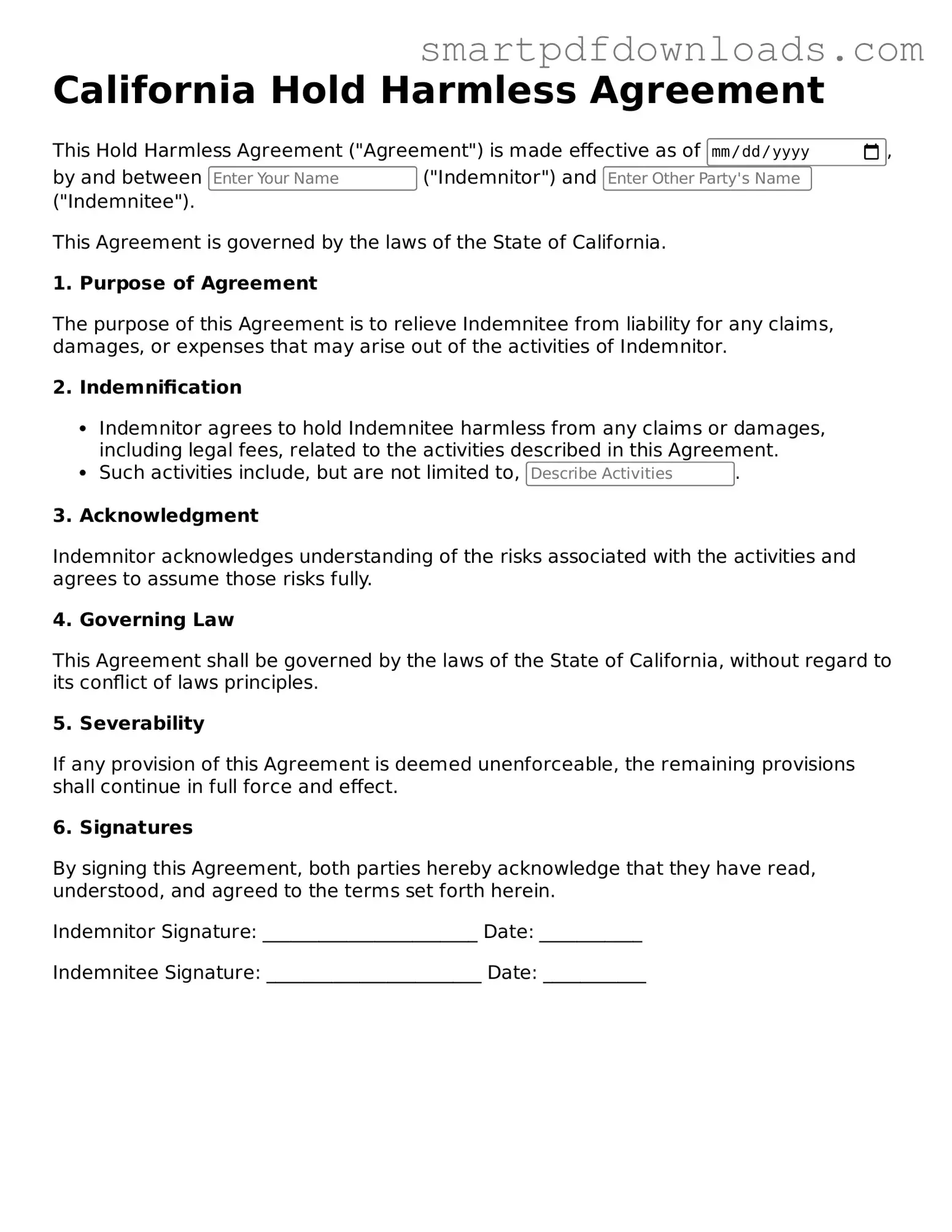Legal Hold Harmless Agreement Form for the State of California
The California Hold Harmless Agreement form is a legal document designed to protect one party from liability for any damages or injuries that may occur during a specific activity or event. By signing this agreement, individuals or organizations agree to assume responsibility for any risks involved, effectively shielding the other party from potential legal claims. Understanding the nuances of this form can be crucial for anyone engaging in activities where liability might be a concern.
Edit Hold Harmless Agreement Online
